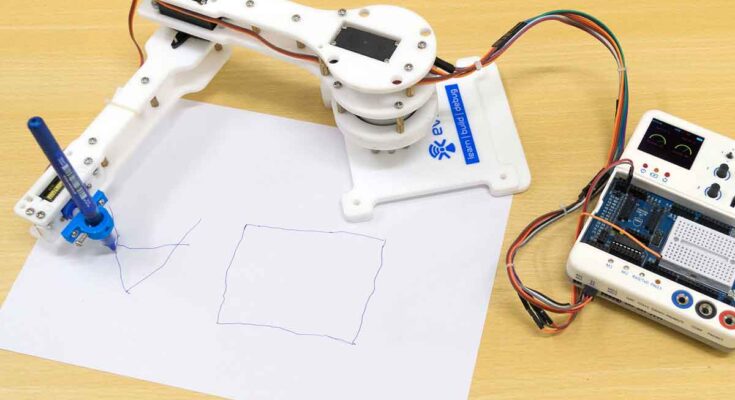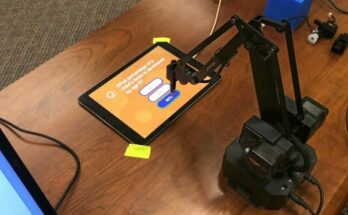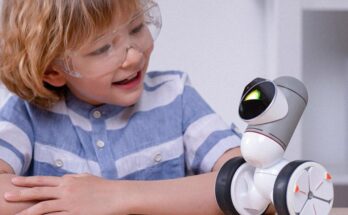Table of Contents
- Introduction of Drawing Robot
- Evolution of Drawing Robots
- Mechanics and Components
- Programming and drawing robots
- Applications in Art and Design
- Collaborative Art Projects
- Drawing Robot Workshops
- Challenges and Limitations
- Future of Drawing Robots
- Impact on Artistic Expression
- Ethical Considerations
- Case Studies: Drawing Robot Artists
- Educational Significance
- Conclusion
- References
Introduction
Drawing robots represents a convergence of art and technology, revolutionising artistic innovation and creative expression. This article delves into the evolution, mechanics, applications, and implications of drawing robots in the realm of art and design.
Evolution of Drawing Robots
From early mechanical contraptions to sophisticated robotic arms, drawing robot have evolved significantly over the years, driven by advancements in robotics, automation, and artificial intelligence.
Mechanics and Components
Drawing robots consist of mechanical arms, motors, actuators, and control systems that enable precise movement and drawing capabilities. Various sensors and feedback mechanisms ensure accuracy and consistency in artistic output.
Programming and drawing robots
Drawing robots are programmed using specialised software or coding languages to translate digital designs or commands into physical drawings. Programmers use algorithms and parameters to control movement, strokes, and artistic styles.
Applications in Art and Design
Drawing robots are employed in various artistic disciplines, including illustration, painting, sculpture, and digital art. They offer new avenues for experimentation, exploration, and innovation in artistic expression.
Collaborative Art Projects
Drawing robots facilitate collaborative art projects involving human artists, designers, engineers, and programmers. These interdisciplinary collaborations blur the boundaries between art and technology, resulting in unique and engaging artworks.
Drawing Robot Workshops
Workshops and educational programmes on drawing robots provide hands-on learning experiences for participants of all ages and backgrounds. These workshops foster creativity, problem-solving skills, and technological literacy.
Challenges and Limitations
Despite their potential, drawing robots face challenges such as technical constraints, software limitations, and cost barriers. Ensuring reliability, versatility, and accessibility remains a priority for further development.
Future of Drawing Robots
The future of drawing robots holds promise for continued innovation and integration into artistic practices. Advancements in machine learning, sensor technology, and human-robot interaction will drive new possibilities in creative expression.
Impact on Artistic Expression
Drawing robots redefines traditional notions of artistic authorship, challenging perceptions of creativity and automation. They encourage the exploration of new mediums, styles, and conceptual frameworks in contemporary art.
Ethical Considerations
Ethical considerations surrounding drawing robots encompass issues such as copyright, authenticity, and the role of technology in art creation. Debates regarding human labour, automation, and the democratisation of art are ongoing.
Case Studies: Drawing Robot Artists
Numerous artists and collectives utilise drawing robots as integral components of their artistic practice. Case studies highlight diverse approaches, techniques, and outcomes in drawing robot art.
Educational Significance
Drawing robots offers valuable educational opportunities in STEAM (Science, Technology, Engineering, Arts, and Mathematics) education. They promote interdisciplinary learning, critical thinking, and creative problem-solving skills.
Conclusion
Drawing robots represent a paradigm shift in artistic innovation and creative expression, offering endless possibilities for artists, designers, and enthusiasts alike. By exploring their evolution, mechanics, applications, and implications, we gain insights into the transformative potential of art and technology.
References
- Lipson, H., & Kurman, M. (2016). Fabricated: The New World of 3D Printing. John Wiley & Sons.
- Bongard, J., Zykov, V., & Lipson, H. (2006). Resilient machines through continuous self-modeling. Science, 314(5802), 1118–1121.
- Fischer, T., & Nakagaki, T. (2011). Constructing mechanisms for perception-action coordination: an autonomous drawing robot. Robotics and Autonomous Systems, 59(3–4), 150–156.
- Ben-Ari, M., & Lipson, H. (2014). Real-time drawing robot. Robotics and Autonomous Systems, 62(1), 12–20.
- Hsieh, C. H., Lin, H. J., & Hu, C. L. (2016). Study the drawing algorithm of a 6-axis serial robot for artistic creation. Journal of Intelligent & Robotic Systems, 84(1-4), 151-162.
- Winder, R., & Cope, A. (2015). Contemporary drawing: from the 1960s to now. Tate.
- Goldin, A. (2018). The Drawbot project: robotic drawing as an educational tool. Journal of Information Technology Education: Innovations in Practice, 17(1), 23–35.
- Slaney, T., & Lagnado, D. (2017). Drawing machines




2 Comments on “Drawing Robot: Artistic Innovation and Creative Expression”